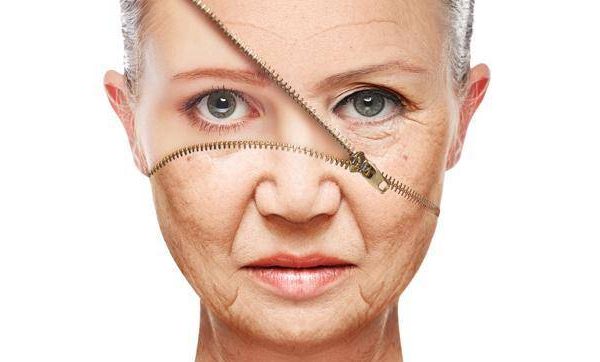Time and nature wait for no man. While the world focuses on social activism and COVID-19, Lyme disease season has slowly descended upon us. Yes, a walk in the woods is a great way to relieve stress, especially with the state of the world, however, it could also be putting your health at risk.
With COVID-19 restrictions being relaxed all around the United States, more and more people are returning to the outdoors and the risk for Lyme disease couldn’t be any higher.
After being housebound for months, people head outdoors, where they then come into contact with harmful ticks. With hospitals already overtaxed, the last thing you want to worry about is developing Lyme disease.
For one, people with underlying health conditions are more vulnerable to coronavirus complications, and being diagnosed with a tick-borne illness such as Lyme disease may make your COVID-19 journey a difficult one.
Thankfully, there are ways you can protect yourself and reduce the chances of being bitten by ticks, and the best way to do so would be to understand Lyme disease.
What is Lyme disease?
Lyme disease is a tick-borne illness caused by the Borrelia burgdorferi bacteria, which people contract after being bitten by infected black-legged ticks. These ticks regularly feed on mice, deer, or birds, and they then transmit the bacteria to humans through biting.
According to research, black-legged tick populations are high during June and July and this period has the most reported cases of Lyme disease (1).
The Centers for Disease Control and Prevention has found that around 30 000 cases of Lyme disease are reported each year across the United States.
Am I at risk?
The CDC has found that Lyme disease is more prevalent on the eastern seaboard, from Virginia to Maine. It can also be found in New York, Pennsylvania, and into Atlantic Canada as well as the upper Midwest, primarily in Wisconsin and Minnesota.
That said, people who spend more time outdoors are more likely to develop Lyme disease. This is because ticks typically habitat in trees, tall grasses, underbrushes, leaf piles, and shrubs.
Additionally, ticks are also going to be out if the weather reads above 45º F. That said, climate change is not only causing Lyme disease to start earlier each year but it’s also causing new areas to become more hospitable for ticks to survive (2).
What are the symptoms?
Lyme disease has three stages, and the symptoms you experience will depend on which stage you are in.
Stage 1: Early localized disease
The stage begins a week or two after the tick bite. The most common symptom during this stage is the bulls-eye rash. The rash will occur at the site of the tick bite. It may be warm to the touch, but it doesn’t itch or hurt.
For some people, the rash may appear as a bright red spot, but it may appear as a bruise on darker-skinned individuals. That said, not everybody experiences the rash. Additional symptoms during this stage include:
- Fatigue
- Chills
- Fever
- Sore throat
- Headaches
- Muscle aches
- Swollen lymph nodes.
Stage 2: Early disseminated Lyme disease
This stage begins several weeks and months after the tick bite and occurs if Lyme disease has yet to be diagnosed. As a result, the disease begins to affect other areas of your body.
Symptoms include:
- A growing rash
- Pain, weakness, or numbness in the arms and legs
- Loss of use in your facial muscles
- Continuous headaches and fainting spells
- Poor memory
- Loss of concentration
- Pink eye
- Heart palpitations and other heart problems
Stage 3: Late disseminated Lyme disease
If your Lyme disease still hasn’t been treated, then you’ll enter stage 3. This stage occurs months or years after the tick bite. It is the final stage, as well as the most serious, of the disease.
Symptoms include:
- Arthritis
- Chronic fatigue
- Numbness in the hands, feet, or back
- Brain disorders – which can cause problems with memory, mood, speaking, and sleeping
- Heart problems
Symptoms are critical when it comes to diagnosing Lyme disease, so it’s important to be very detailed when discussing your exposure history with your doctor. You should be very open about your outdoor activities with your doctor, as the sooner you’re treated for Lyme disease, the better the outcome will be.
Could it be COVID-19?
No.
Yes, Lyme disease and COVID-19 share similar symptoms such as fever and fatigue, but there’s one major difference between the two sets of symptoms – if you’re not coughing, it’s probably not COVID-19.
COVID-19 often causes coughing and difficulty breathing and these are not symptoms typically associated with Lyme disease, so if you are experiencing any respiratory difficulties, then you may not have Lyme disease.
Protect yourself from Lyme disease
What to wear?
In addition to your face mask, light-colored long sleeves and long pants. You should also tuck your pants into your socks, so ticks can’t crawl up your legs.
You can also spray your clothes, shoes, and socks with the insecticide Permethrin, as it kills ticks on contact. In fact, there are clothes that are already treated with Permethrin, and they work quite well.
For instance, a 2019 study found that the use of Permethrin-Treated Uniforms resulted in a 85% tick mortality rate.
Unfortunately, Permethrin cannot be sprayed on the skin. Instead, you should use EPA-approved DEET-based sprays, such as Ben’s 100% DEET Spray.
Where to hike?
As mentioned, ticks love tall grass and bushy areas, so it’s important to stay on the path as doing so will reduce your risk of tick bites.
What to do when you get home
Once you get home, it’s important to check your clothes and body for ticks. You should also throw your clothes into the dryer as this will help to kill any unnoticed ticks that you may have missed.
Ticks are commonly found in the following 10 places so it’s important to check them thoroughly:
- scalp
- in and behind the ears
- behind your neck
- under your arms
- between fingers
- waist and back
- belly button
- pelvic and groin area
- behind the knees
- between toes
If you do find a tick, it’s vital to remove it as soon as possible, as Lyme disease is believed to transmit after the tick has been attached for at least 24 hours.
How to properly remove a tick
 The Centers for Disease Control and Prevention has instructions for removing ticks. You’ll need fine-tipped tweezers, rubbing alcohol (or soap and water), and a small jar or container with a lid. You may also need a mirror and an extra person to help with the removal.
The Centers for Disease Control and Prevention has instructions for removing ticks. You’ll need fine-tipped tweezers, rubbing alcohol (or soap and water), and a small jar or container with a lid. You may also need a mirror and an extra person to help with the removal.
- Take the tweezers and gently grab the tick as close to your skin as possible. Avoid clamping or ripping motions, as they could crush or break a tick.
- Slowly pull back with even pressure until the entire tick (body and head) is removed.
- Swiftly place the tick into the jar or container and secure the lid.
- Wipe the area with rubbing alcohol, or soap and water.
Make sure to save the tick in the sealed container, as your doctor may need it should symptoms arise and a diagnosis is required. In fact, the state of Connecticut runs a lab that will analyze your tick free of charge.
Treatment
Early treatment of Lyme disease is important as it helps to prevent complications such as arthritis, facial paralysis, or heart problems.
If your doctor suspects that you have Lyme disease, they may order an antibody test. This test will check for antibodies that the immune system produces in response to the Borrelia burgdorferi bacteria. A positive antibody test will then force your doctor to order the Western blot test to confirm the diagnosis of Lyme disease.
Once you’ve received your diagnosis, your doctor may then recommend you to a specialist who will confirm your diagnosis and help develop an effective treatment plan.
References
https://myhealth.alberta.ca/Health/Pages/conditions.aspx?hwid=ty3183&
https://www.cdc.gov/lyme/datasurveillance/maps-recent.html
https://www.cdc.gov/lyme/stats/humancases.html
https://www.cdc.gov/lyme/stats/graphs.html
Monaghan, A., Moore, S., Sampson, K., Beard, C., Eisen, R. (2015). Climate change influences on the annual onset of Lyme disease in the United States, Ticks and Tick-borne Diseases, Volume 6, Issue 5, Pages 615-622, ISSN 1877-959X, https://doi.org/10.1016/j.ttbdis.2015.05.005.
Sullivan, K. M., Poffley, A., Funkhouser, S., Driver, J., Ross, J., Ospina, M., Calafat, A. M., Beard, C. B., White, A., Balanay, J. A., Richards, S., Dyer, M., Mather, T. N., & Meshnick, S. (2019). Bioabsorption and effectiveness of long-lasting permethrin-treated uniforms over three months among North Carolina outdoor workers. Parasites & vectors, 12(1), 52. https://doi.org/10.1186/s13071-019-3314-1



![women [longevity live]](https://longevitylive.com/wp-content/uploads/2020/01/photo-of-women-walking-down-the-street-1116984-100x100.jpg)










